Around the Bloc: Rights Group Slams Russian ‘Coming Out’ Bill
Proposed anti-gay legislation comes ahead of singer Elton John’s planned meeting with Vladimir Putin over gay rights.
More...We kindly inform you that, as long as the subject affiliation of our 300.000+ articles is in progress, you might get unsufficient or no results on your third level or second level search. In this case, please broaden your search criteria.
Proposed anti-gay legislation comes ahead of singer Elton John’s planned meeting with Vladimir Putin over gay rights.
More...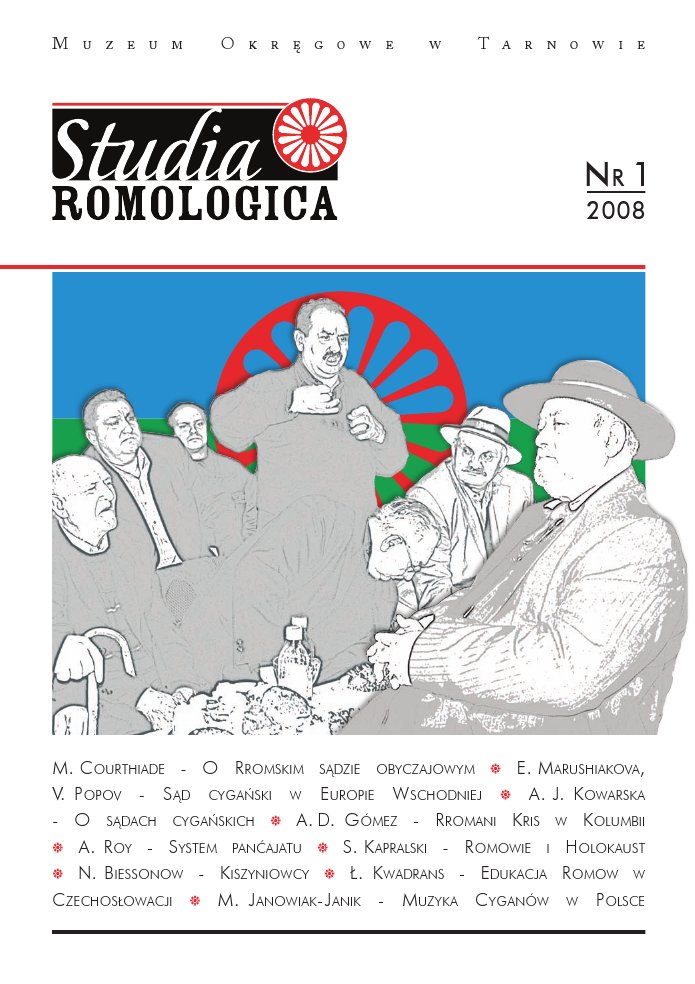
The source documentation and research on music of the Polish Gypsies have relatively short tradition and are limited to only few papers. Among the written sources, the most extensive collection of Gypsy songs texts is work by Izydor Kopernicki "Textes tsiganes, contes et poésies". Also Jerzy Ficowski placed a lot of songs texts in his publications. The first transcriptions and analysis of the melody of Gypsy songs were included in the master’s thesis of Ewa Kafel, titled “Songs of Gypsies of Czarna Gora near Bukowina Tatrzanska”. Transcriptions of songs by Teresa Mirga and score of works by Edward Debicki have been included in the master’s thesis of the author of this article. In addition Agnieszka J. Kowarska was dealing with the problems of Gypsy dances in Poland. Among the phonographic sources the best documented traditional Gypsy repertoire are the field recordings by the Hungarian ethnomusicologist Katalin Kovalcsik, who in 1986 was conducting her research in the south of Poland. Within the context of the limited research undertaken, the musical repertoire of the Carpathian Gypsies has been well documented. However our knowledge about traditions of Lovara and Kalderash is even less.
More...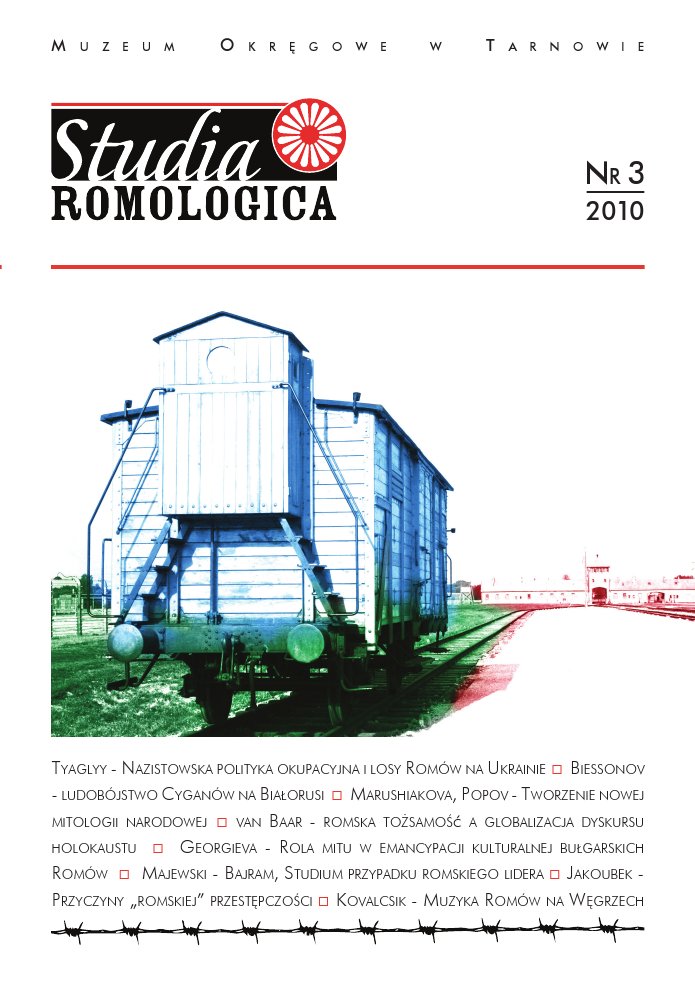
The paper is an overview of the music making of the Roma in Hungary from the second half of the 18th century to 2005. The author divides the historical genres performed by Roma into the so-called Gypsy music played by Gypsy bands for outsiders and the Romani folk music for internal using of the Romani communities. The performers of the Gypsy music came mostly from Romungro families and their music served as the national music for the Hungarians in the 18th and 19th centuries to be turned into a part of the popular music in the 20th century. The music of the Romani communities, the folk music, is mostly not instrumental and in the case of the dance songs the performers produce vocal substitutes of the orchestral sound. A new chapter of the Romani music making has started from the 1980s with the first success of the Romani emancipation movement. The Romani rap music from 1997 and the Romani pop music from 2000 have formed on the urban scene. In the villages, the Romani ballroom music has been fashionable since the middle of the 1990s. The author emphasizes the growing internationalization of the most recent music played by the Hungarian Roma.
More...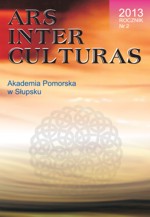
Rapid development of Ukrainian piano school is an inseparable part of European pianoschool’s evolution in the 20th century. The article is aimed at describing pianists’ performance practice and its role in the development of national culture as well as at surveying the genesis of musical educational tradition and establishment of piano methodology. Ukrainian piano school is defined as a phenomenon of cultural and the 20th century 6 periods are singled out. Special attention in the structure of piano school is drawn to musical educative activities, its development having facilitated reconceptualization of the content of piano education and teaching methodology throughout different periods. The author emphasizes that piano schools leaders and their followers realized their intellectual and creative potential in various performing activities and original teaching techniques. Piano class is considered as a special musical and creative space at an arts educational establishment where traditions are kept and transformed, new ideas emerge, creative views of young music teachers, who are the followers of mother piano schools, come to life and develop.
More...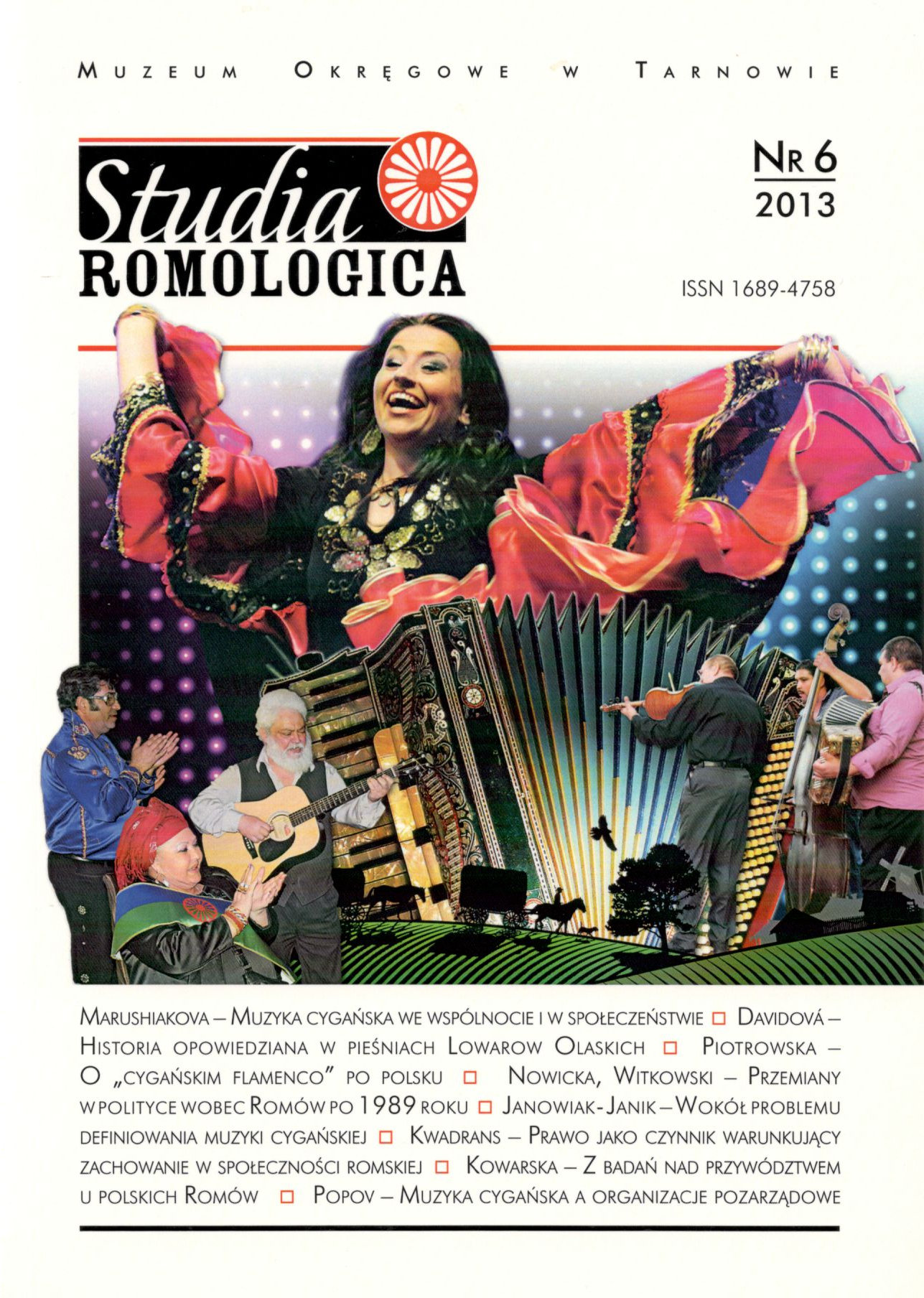
The Gypsies (Roma and other Gypsy communities) are actually an example how a people can exist in two dimensions – as a separate community/communities and as a more or less separated part of the society. Numerous researches of Romani studies scholar till now paid attention mostly on them as detached, specific community, but when speaking about ethnomusicology a paradox is observed. Main subject of majority researches are the Gypsy musicians, who serve the surrounding society, i.e. Roma are studied not so much as community, but rather as part of the society. The present article analyses the different spheres of functioning of the Gypsy music in the society and within the society and their mutual overlapping. Special attention is paid on role of the music within the Gypsy communities – in the different family (mainly during weddings) and calendar holidays, during the different rituals, in the everyday life, in different midst (family, age and/or sex restricted). On this ba¬sis the different appearances of the community identity of the Gypsies are analyzed, as well as the role, which the “Gypsy Music” (determined as such by the community itself) has on its creation and expression.
More...
The article is an overview of the Olah Romas‘ song folklore and lyrics in the former Czechoslovakia – in Bohemia, Moravia and Slovakia, where until today it has retained its active existence in an unchanged form – in particular among the group Lovari. While the music and folk songs of the Roma are relatively known, the Olah folklore in its authentic form remains rather unknown. It has been transmitted through generations in an uninfluenced form even after these societies were forced to stop being migratory by the power of the communist state in 1959. Their song folklore is differentiated in structure, forms, types and way of performance, and divided into two main groups of songs: Mulatousha, louke djila which are long, slow songs, and Khelimaske djila which are rhythmical songs to be danced to. This article examines the lyrics and content of these songs and also focuses on their specific function in the Olah society. The majority of these songs are traditionally without a musical accompaniment which increases the importance of their lyrics. The singer tells through them a story to the community to whom he dedicates the song by the way of a ritual formula – which adds to the atmosphere of the song as far as both content and rhythm are concerned. The author of the article chose ex¬amples of the lyrics from her large collection of original recordings made between the years 1956 and 1990. The texts are transcribed from the recordings in the Olah Roma language and then loosely translated.
More...
The article outlines Polish literature dedicated to the phenomenon of flamenco. An author not only presents the state of research on flamenco in Poland, but also refers readers both to the earliest and to the most popular works on flamenco functioning abroad. While analyzing Polish literature Piotrowska asks a question about general attitude of Polish authors towards the issue of ‘Gypsyness’ of flamenco and presents how Polish writers treat Gypsy roots of flamenco. The author concludes that in Polish literature – comprising a few articles and books – Gypsy connotations of fla¬menco are usually duly underlined. At the same time, Piotrowska states that Polish literature on flamenco is dominated by practical approach focusing on performantive practices (dance, instrumental play), rather than on historic or aesthetic perspective. The author stresses the absence of Polish translations of important books on flamen¬co, however she also acknowledges the role Polish Internet sites play in promoting the Gypsy aspect of flamenco phenomenon.
More...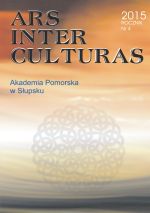

The article deals with the musical culture of Great Moravia in the period of the Byzantine Mission that influenced greatly both liturgical texts and choral singing. The textsof this music were also influenced highly by the work of Constantine (who adopted the nameof Cyril later) and Methodius. The singing of Great Moravia thus combined the elementsof both the eastern and western traditions. The article also includes an example of a canon in honour of St. Cyril, the authorship of which is attributed to one of the pupils of this scholar.
More...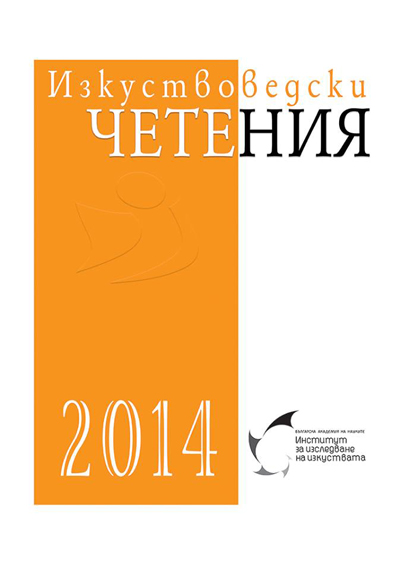
The expression postmodern culture occurs in many languages as synonymous with postmodernism. At the same time, ever since Lyotard published in 1979 his hypothesis and specified its two components – post-industrial society – postmodern age in culture – a theory of postmodernism has been developed. It distinguishes itself from other theories by its critical approach in relation to modernism. For this reason, postmodernism is generally regarded as being a challenge to the established order of understanding accepted by the academic fields of study. More precisely, theoretical postmodernism is a trend in various disciplines that seeks to revaluate (or reconceive) the foundational principles and concepts of the modern thought. “Post-modern culture” is one of those “post” terms that both designate and embody the idea of epochal shift from the modern to postmodern era. The view that music actively constructs ‘culture’ and ‘explains reality’ became possible with the publishing of works exhaustively arguing the contemporary (Western) reality in a combination of its quite different aspects. I call these models not only because these interpret/conceptualize our (“post”) modernity, but also because their followers in various disciplines (including musicology) undertake to further develop and argue the ideas practically. This essay offers a comparison between two types: programmatic and interpretative models for ‘postmodern culture’. A differentiation between theory, its term and the free use of ‘postmodern culture’ is necessary in musicology as well where interdisciplinary ideas are always there; while proper analytical criteria for ‘postmodern’ evaluation of musical composition are unevenly used by various schools. Still, these are certainly priorities in the movements of new musicology, socio-musicology and cultural musicology. The champions of ‘postmodern models of knowledge” in music advocate for adopting “a sceptical view of conceptual synthesis and aesthetic autonomy’ (Lawrence Kramer).This necessitates a type of analysis that stimulates a “deeper shift in the discipline” and leads the musicologists “to explore phenomena that previously had little or no place in musicology”, according to Martha Feldman. In more ambitious programmes, the analysis evolves into models of integration in sociological courses; their authors urge learning students to actively ‘apply sociological ideas to explain empirical reality’ (Jarl Ahlkvist).
More...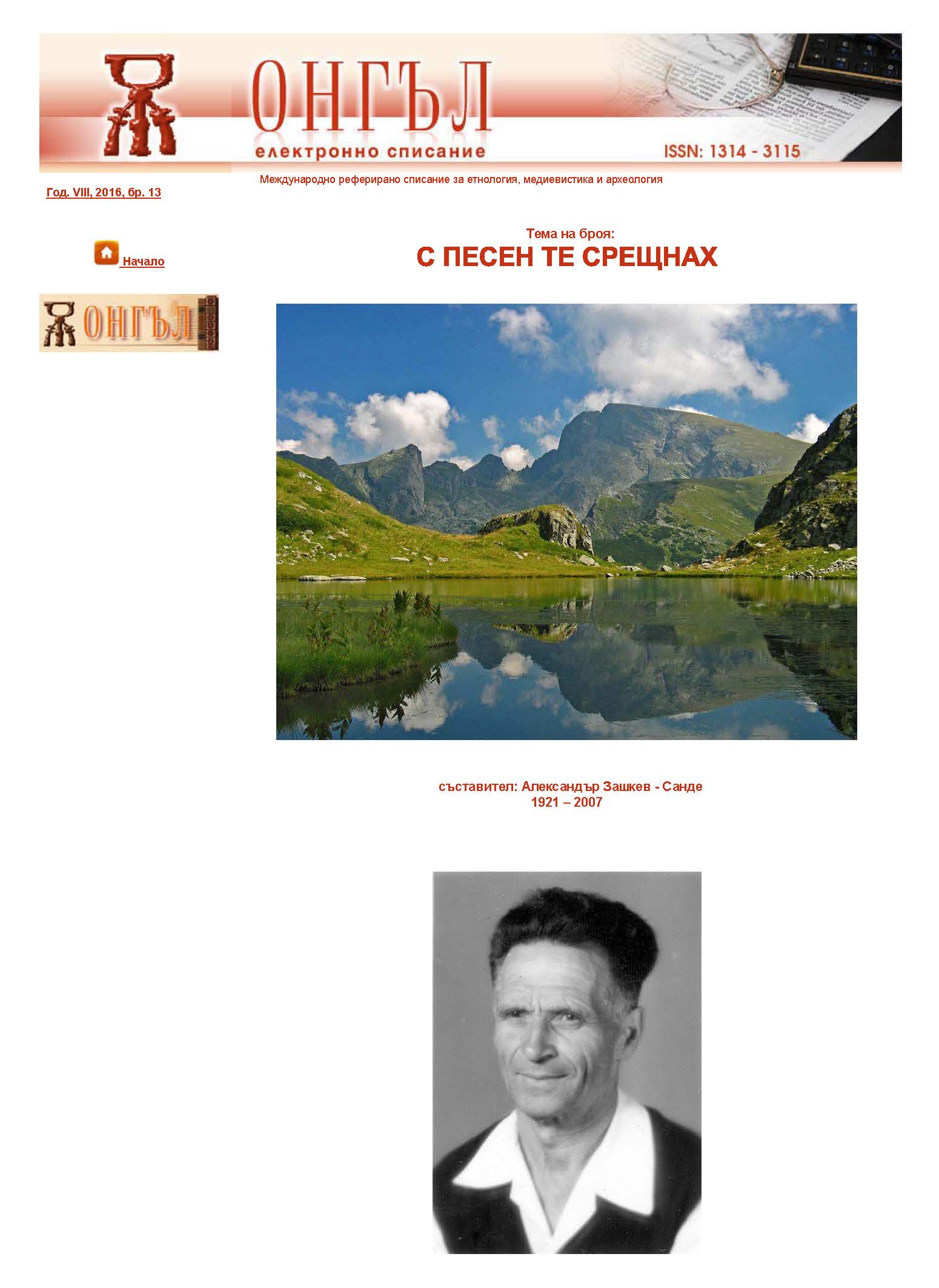

Lyrics in popular music are an important site of language contacts, of hybridization and of symbolic and ludic use of linguistic material. They are a source and a vehicle of linguistic innovations. However, the study of lyrics mostly focuses on their relation with the global expansion of English, although various historically existing language practices in the receiving societies can shed additional light to the topic: in the case of Croatia, this would concern the contact points with Italian and German. The paper analyses examples from various music genres, and shows analogies with early modern and post-modern macaronic poetry and the linguistic witticism of popular and élite cultures, including the use of phonetic analogies and other selected features to create linguistic metonymy. On that basis, the paper argues that popular music should be both synchronically and diachronically integrated into culture, and proposes a typology of linguistic interpolations and interferences.
More...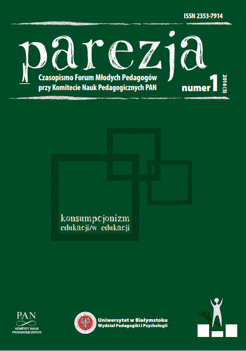
The article presents subjective and critical analysis of current music education. The analysis is based on long and meditative pedagogical experience. The most visible problem of modern musical culture is inconsistency of musical reality, in which young people live and the language of Music subject. It is mainly connected with the ignorance of characteristic modern social practices such as consumerism and inapplicability of didactic aims in music. In my opinion it is one of the main reasons of discrepancy between music curriculum and musical aspirations and interests of students. The aim of this article is to present current model of music education, indicate weaknesses of this issue and show eventual possibilities in changing the approach of young people to art music. The article is divided into a few sections, which present basic issues about music education, the recognition of symptoms of consumerism and the conclusion.
More...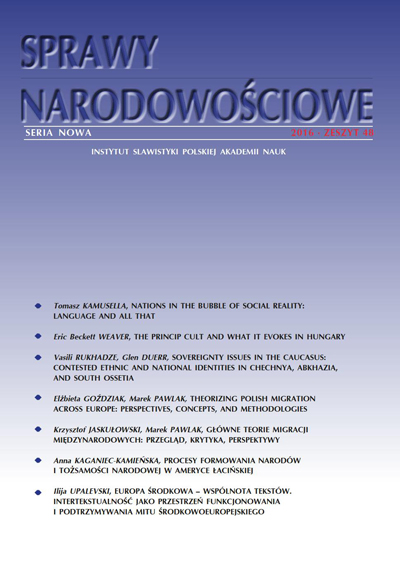
This article addresses issues which can be seen in the manifestation of ethno-nationalism in rock music. Concepts of nationalism and patriotism are illustrated by references to the literature on the subject. Polish national ideology is formed, for example, on a pragmatic concept of nationalism. A new direction in this work is an examination of pop-nationalism of rock music on the example of the Polish band “Horytnica”.
More...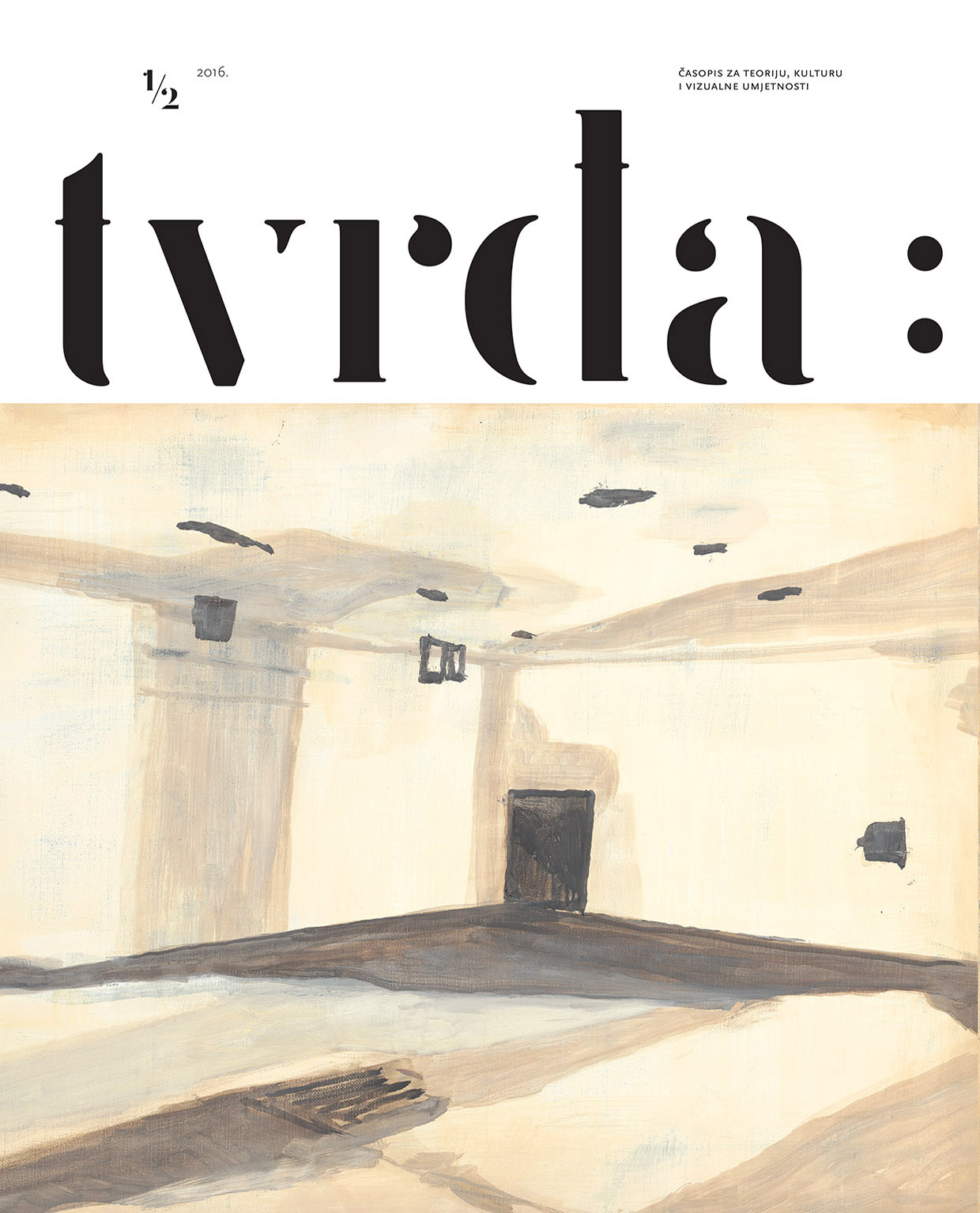
Apokalipsa smisla na kraju 20. stoljeća iznudila je projekt Davida Bowiea i postavila pred nas zadatak pronalaženja uha, mogućnosti saslušavanja njegova jedva zamišljena svijeta; Stvarnosti, Slijedećeg dana i Crne Zvijezde. U momentu koji je epicentar interesa ove situacijske analize – epohalnom događanju eskalacije tehničkog virtualiziranja zbilje od sredine osamdesetih godina prošlog stoljeća – smisao se raskriva kao nov oblik komodifikacije stanja neodređenosti pod silinom tehnološki transupstancijaliziranog svijeta.
More...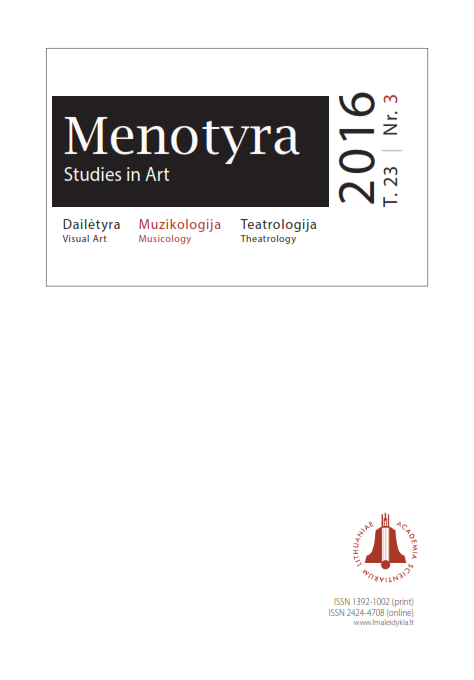
Based on literature and manuscript documents from the 19–20th centuries about educational processes in Catholic and Orthodox seminaries, this article presents a discussion of musical education in three 19th-century institutions: the Lithuanian Seinai, Polish Vilnius and Russian (Orthodox) Vilnius (Lithuanian) priests’ seminaries. The aim is to examine how musical education of priests was organised in the 19th century and the artistic activities in seminaries from different dioceses (Vilnius and Seinai) and confessions (Catholic and Orthodox). The article gives an overview of teaching programmes in the seminaries, the public and concert activities of seminary students, and individual figures. In the Catholic Vilnius diocese seminary in the Russian Empire’s Vilnius general governorate, education was organised in accordance with the general seminary provisions released in 1843 that applied to all Catholic seminaries. The Seinai (Augustavas) diocese belonged to the Kingdom of Poland (and only after the uprising of 1863–1864, to the Warsaw general governorate), thus the afore-mentioned provisions for priests’ education did not apply there. There was no uniform education programme for seminary students in the Kingdom of Poland, and during its entire existence, the preparation of an education plan for the Seiniai seminary depended on the competency of local bishops, the seminary’s leadership and its professors. Compared to other Catholic seminaries, attention to Orthodox education in the Russian Empire was very intense: there were regular educational reforms, study plan reviews, and papers were published on the theme of education. Renowned pedagogues such as Aleksandras Waszkewiczius and Joachimas Glińskis taught singing at the Vilnius seminary. Ignacijus Ivanovas, who taught at the Vilnius (Lithuanian) seminary, is mentioned in sources as a teacher who worked and taught singing in several Vilnius seminaries and religious schools, even being recognised for his activities in this field and granted the title of honorary citizen of the city in 1891. Vilnius city seminary students were regular participants in the city’s concert life, organised church and secular music events, staged drama performances, sang in choirs and performed in instrumental ensembles. At the Seinai seminary meanwhile, Lithuanian nationalist attitudes prevailed: the seminary students compiled Lithuanian books, collected folklore material, recorded the particularities of the Lithuanian languages, prepared Lithuanian religious literature and even assembled a Lithuanian clerical choir. Even though Lithuanian spirit was not outwardly encouraged in the official educational process at the Seinai seminary, it did undoubtedly influence the world view of its future graduate priests.
More...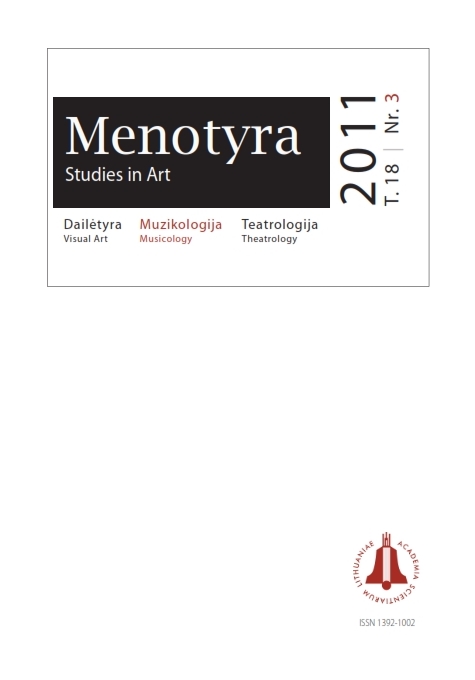
The spiritual creation of a famous composer Stanisław Moniuszko (1819–1872) is a wide and little analysed subject. The main object of the article is canticles and writings for the organ created in Vilnius period (1839–1858), which are analysed in the general context of his work and creation. The first part of this publication deals with the composer’s spiritual and organ music created in Vilnius period (in the second part I will analyse choral music and such great compositions as mass, cantata, litanies, etc.). The task of the article – to analyse canticles and writings for the organ created by Moniuszko in Vilnius period and evaluate them not only in his personal creation practice but also in the general context of Polish and Lithuanian music history. The article presents new facts of composer’s creativity and specifies the old ones. By way of Moniuszko creation is analysed referring to the bibliography of Vilnius, Warsaw and Moscow also letters written by Moniuszko and other published sources. The aim of this article is to supplement with new ideas and observations the former studies, made by Polish and Lithuanian musicologists about Moniuszko’s creative work. The methods used in the article – historical, comparative and synthesis.
More...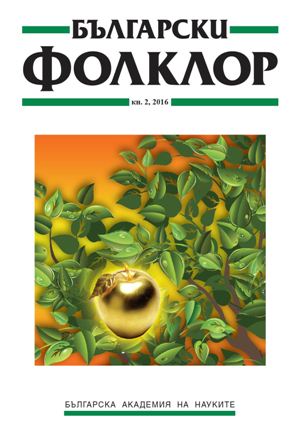
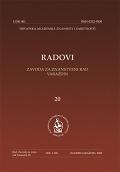
Jan Křtitel Vaňhal had sojourned quite shortly in Croatian lands, but nevertheless left some traces, at least in compositions which have been preserved in Varaždin musical collections and elsewhere. He was only one among the Czechs who belonged to one of the two great European migratory waves: his compatriots mostly moved towards the West (if not only to Vienna, but also to Mannheim and further), and also to the South, for example to Varaždin and Zagreb. The second important migrant group were Italians, who brought and disseminated their Baroque tradition from Madrid to London and St Petersburg. Croatian lands were influenced by both migrations; in this, the Czech musicians were mostly oriented towards the interior part of Croatia, while the Italians mostly visited the eastern shores of the Adriatic, especially larger towns such as Rijeka, Zadar, Split and Dubrovnik. However, musicians from Croatian lands also migrated abroad, either to gain more advanced music education and then to return home, or trying to earn recognition in foreign lands. This text is dealing with the analysis of various types of migrations of foreign and domestic musicians; it is also offering case studies and tries to identify permanent enrichments (cultural transfers!) as the final outcome of such migrations, especially those important for Croatian musical life.
More...